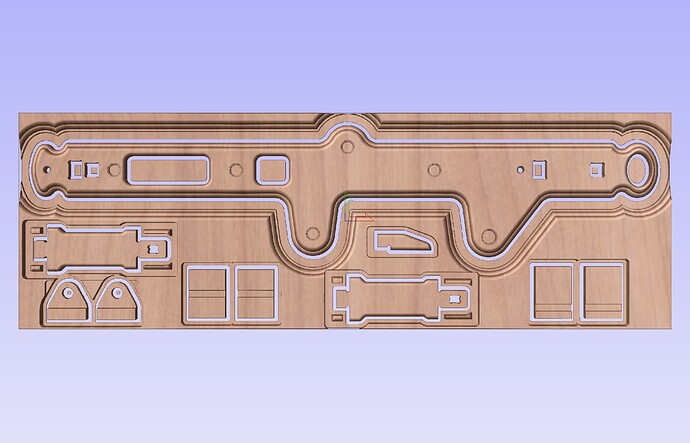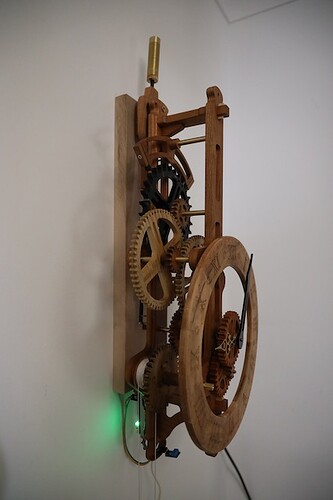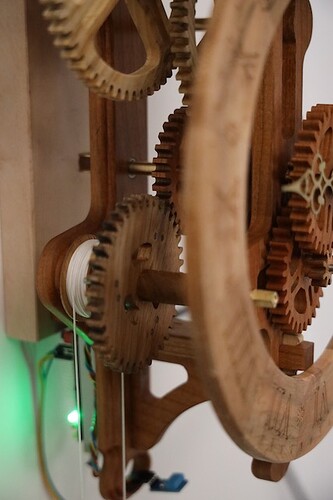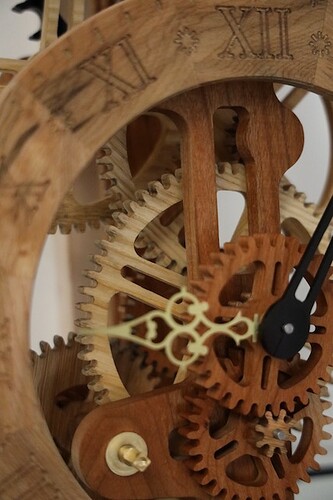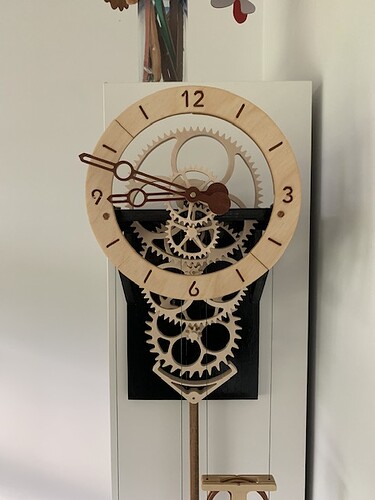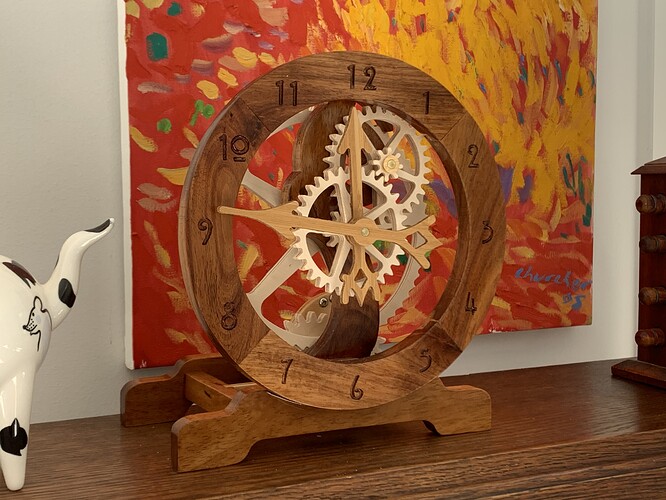Here is a pic of my latest clock. Is anyone else here making these?
That is awesome and would love to make one myself but have no clue how.
You might check out the wooden clock plans by Brian Law (https://www.woodenclocks.co.uk/). He sells plans for a variety of wooden clocks. I’ve purchased many of the plans, but haven’t yet done any, but they are very well done. You get a PDF and DXF for each plan purchased.
I have not. But I would really to make one.
Thank you. I have DLed one of the plans. I will get on it after Christmas and make a video for YouTube.
good idea…so good in fact that this is indeed a Brian Law design. I bought the plans from his website ![]()
What types of wood did you use in your clock?
I have made a Brian Law wooden clock, 2 years or so ago. Was a steep learning curve as it was also the first ‘complex’ project made on my CNC (Vectric VCarve, ShapeOKO 3XL), and steep too learning how wood moves once major cuts alter its ‘settled’ state.
Went on to make a Raspberry Pi Nano embedded sensor to collect pendulum swing timings and, with some success, influence the pendulum with magnetic impulses - I embedded a Neodymium magnet in the end of the pendulum rod to do this.
Tigerwood for most of the gears, Walnut dials, Hard Maple for the frame and some Baltic Birsh Plywood in the winding mechanism
Clock looks great. Can you tell what bit you used to make the gears? will a 1/8 bit work or is something smaller required.
thanks
@Gar @AndyCXL RE: the Brian Law designs, did you have to source any hardware to assemble these?
They look great and should be a fun challenge.
There are CNC’d (or laser) parts, and I made some turned parts. Basic workshop tools all that is required beyond that. Time spent working on cut and finish on the gears, both for accurate dimensions and smooth finish on the teeth, will be helpful and cut down frustrations of sticking or excessively heavy weights needed when the clock is running. Ground steel pins and miniature roller-bearings were the only hardware bought in, aside from your choice of wood.
I have made two clocks from plans supplied by Clayton Boyer.
The first was scaled by 80% as my little 3018 couldn’t fit the larger gears. The second was extensively modified to use a synchronous motor to drive it.
Be prepared to be frustrated! Clayton emphasised that a very high tolerance for frustration is of critical importance in making these clocks.
The escape wheel and pallets on the pendulum clock needed multiple iterations before it finally started ticking.
(Sorry new user here so only one pic uploaded.)
Welcome to the group Bruce!
I’ve seen Clayton’s plans but have not tried one yet. Your clock looks great, awesome job!
Clock no 2
Last year I swapped my 10yr old 3d printer for a little 3018 router. (We had more than enough bits of plastic in the house.)
The 3018 has been a great introduction to CNC routers but its limitations are becoming apparent. Mind you, even this little machine has let me make amazing things like these clocks.
The Longmill is looking like the best upgrade option. I just have to get the financing side sorted.
I started with a 3018 as well and made some cool stuff with it. I upgraded to a 30x30 LongMill a couple years ago and have not been disappointed.
I like the second clock too, by the way!
I started with the 3018 as well. Now have the Longmill 30x30. I had to start with the 3018 to prove to myself I wanted to learn this. No regrets the 3018 or the Longmill. The 3018 taught me “tiling” to the Nth degree ![]()


